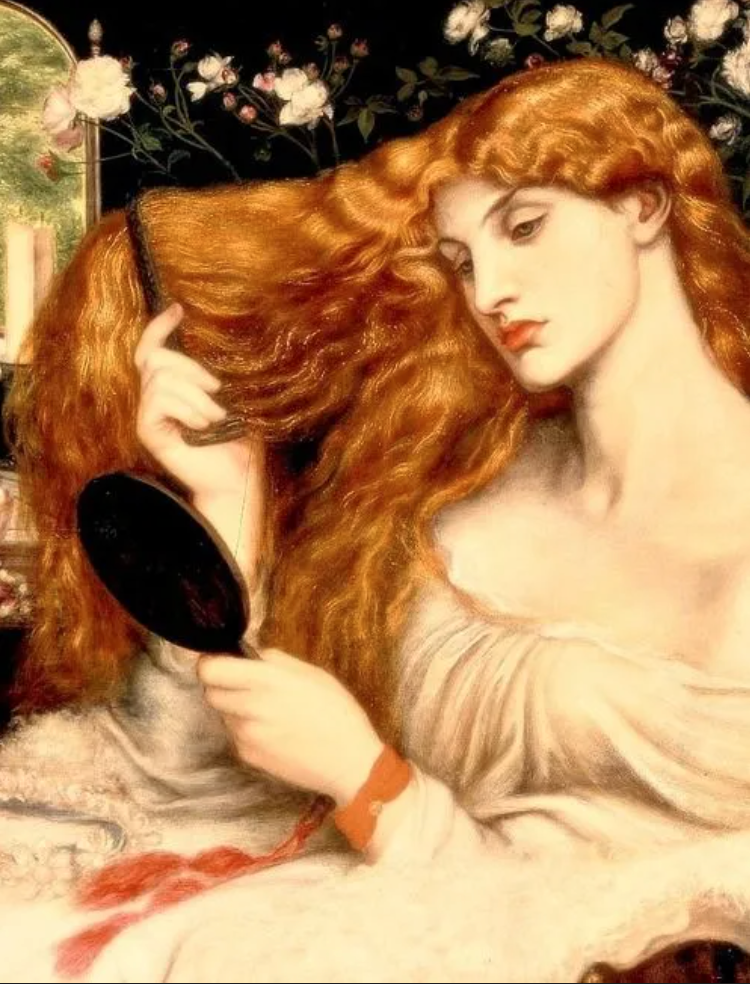Lilith: The First Eve, The Demon, The Witch
Lilith: The First Eve, The Demon, The Witch
History of Lilith
"And God created the human species in His own image...male and female created He them." - Genesis 1:27
The oldest Biblical account of creation tells us God created the first man and first woman simultaneously. Not until the second chapter of Genesis is Eve created from Adam's rib. Jewish lore calls this first woman from Genesis chapter one Lilith.
Because of the apparent contradiction in the Torah between Genesis chapters 1 and 2, ancient rabbis came up with the idea of the "First Eve."
After the Holy One created the first human being, Adam, He said: "It is not good for Adam to be alone." He created a woman, also from earth, and called her Lilith.
They quarreled immediately. She said: "I will not lie below you." He said, "I will not lie below you but above you. For you are fit to be below me and I above you."
She responded: "We are both equal because we both come from the earth."
Neither listened to the other. When Lilith realized what was happening, she pronounced the Ineffable Name of God and flew off into the air.
Adam rose in prayer before the Creator, saying, "The woman you gave me has fled from me." Immediately the Holy One sent three angels after her.
The Holy One said to Adam: "If she wants to return, all the better. If not, she will have to accept that one hundred of her children will die every day."
The angels went after her, finally locating her in the sea, in the powerful waters in which the Egyptians were destined to perish. They told her what God had said, and she did not want to return. - Alphabet of Ben Sira 23a-b
In Hebrew texts, the term lilith or lilit (translated as "night creatures," "night monster," "night hag," or "screech owl") first occurs in a list of animals in Isaiah 34, which is the only part of the Bible that lists Lilith by name.
"The wild cat shall meet with the jackals, and the satyr shall cry to his fellow, yea, Lilith shall repose there and find her a place of rest." - Isaiah 34:14
Who is Lilith?
Lilith was Adam's first wife but flew away after Adam refused to see her as an equal. She was exiled from the Garden of Eden and cursed to have one hundred of her children die every day because Adam complained to God of the uncomplying companion.
Jewish infants wore protective amulets with the name of the three angels sent by God to retrieve Lilith. When Lilith went to harm the babe and saw the charm, the infant remained unharmed.
Is Lilith a Demon?
In Aviva Cantor Zuckoff's essay, The Lilith Question, she says, "mythological characters have never remained constant or immutable; they are always changing in response to human need." We see Lilith originate as a physically and spiritually empowered woman who opposes tyranny to a demon/witch who kills pregnant women, injures babies, and steals men's life force to spawn her demon children.
Zuckoff describes the importance of how the form of Lilith as a demon, witch, and villain arose during times of Jewish Exile. When the survival of the Jews was under threat, women who valued altruism (acting for the benefit of others, even at our own expense) were crucial to the success of survival and provided the little power Jewish men had left. The strength of Jewish women was desirable as self-sacrifice for the greater good, but not when associated with power.
Men invented tales of the demon who preyed upon babies, pregnant women, and sleeping men to sway women from viewing themselves as equal, thus subservient to the patriarchy's control.
Lilith is the shadow of the assertive yet altruistic Jewish woman, such as Esther. The cultural majority sees Esther as "good" and godly while viewing Lilith as "evil" and demonic. The creation of "the witch" and affiliation with the demonic is not unique to Judaism. Historically, many patriarchal cultures have created free-spirited, single women as villains and a metaphor for evil to sway the masses to conduct themselves in the ruling class's favor.
Zuckoff also mentions that Lilith represents a force that steals power and thus leaves her victims helpless, which can be viewed as a metaphor for the Exile of the Jewish people, the time when most of the folklore surrounding Lilith surrounds her was created.
Feminism and The Lilith Archetype
So who is Lilith? Demon? Witch? Feminist Icon? Tool to push misogynistic ideals? Perhaps the truth lies in the middle of the varying perspectives.
In essence, she is a powerful force against tyranny who took power over her life (rather than whining to God as Adam did) and possessed supernatural abilities to speak the name of God.
At the same time, her violent side arose because of external influences of oppression. While she may represent the perils of an outspoken woman who opposes the accepted norms to some, to others, she is a beacon of hope and a source of power to those deemed of lesser value.
Lilith also serves as a warning to the monsters we as a society can create with systems of oppression. Crime is not the product of bad people or "good" vs. "evil" most of the time. Crime is a symptom of a broken method of government and cultural beliefs.
Sources
Jewish Women's Archive. (2022, May 4). Alphabet of Ben Sira 78: Lilith. Retrieved from https://jwa.org/node/23210
Pelaia, Ariela. (2020, August 26). Lilith in the Torah, Talmud, and Midrash. Retrieved from https://www.learnreligions.com/lilith-in-the-torah-talmud-midrash-2076654
Zuckoff, Aviva Cantor. (1976, September 2). The Lilith Question. Retrieved from https://lilith.org/articles/fall-1976-29/

